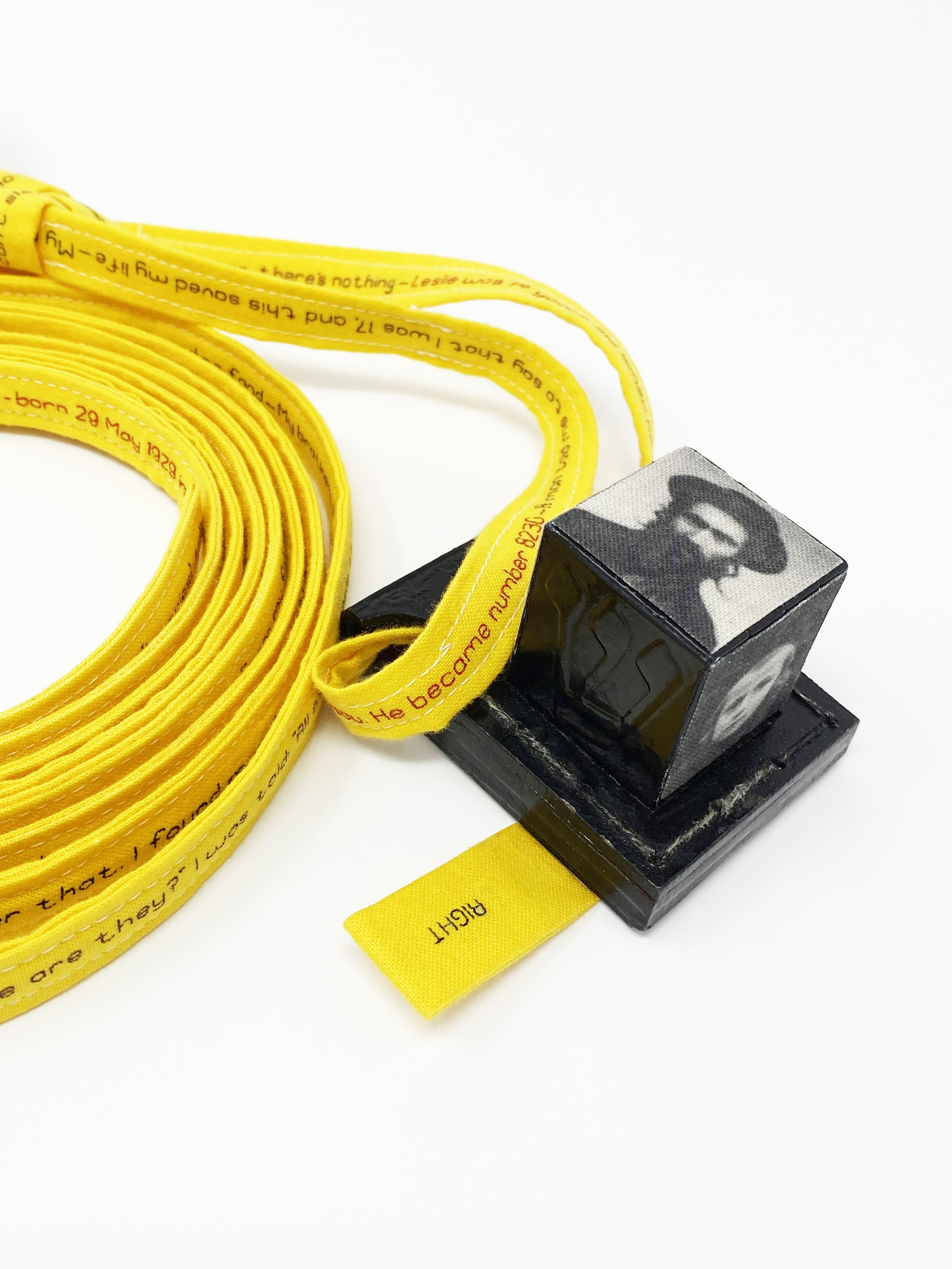family ties, 2020
invited - National holocaust museum uk 2025
The Kleinman Family
Taken in 1936 before the two youngest boys were born.
Top: Chaya Sorah, Rachelle, Mordechai
Middle: Gittel, Sheindel
Bottom: Leslie, Frimet, Chaim Zvi
Leslie Kleinman BEM and his family lived in the small village of Ombod, in Romania. In 1940, the Hungarians occupied this area of Romania, and on 19 March 1944, the Germans invaded Hungary, arriving on a Saturday, the Jewish Sabbath.
First they took his father, and Leslie, aged 14, remembered being in the street with his mother, when they took him. They cut off his father’s beard and made fun of him. That was the last time he saw him. It was only in 1968 that Leslie discovered that his father had been sent straight to Auschwitz.
Three weeks later, in April 1944, they came for the rest of the family, taking them to Satmar ghetto. On 18th May, they were loaded onto and locked into freight cars, for goods, not animals.
When they arrived in Auschwitz-Birkenau, Leslie’s mother and six of his brothers and sisters were sent to the left of the line. He was sent to the right. “I never saw my family after that. I found myself alone in the world. I never said goodbye to my mother.”
Leslie suffered great torments, lived through terrible experiences, and observed man’s inhumanity to man, in Auschwitz and on death marches.
He was liberated on 13 April 1945 weighing less than 20kg.
You couldn't escape from these trains, there were no windows. There were 110 people crammed into a space meant for 50. You could hardly move, it was so bad. They gave us one bucket of water, it didn't take an hour and it was all gone. They gave us no food, and one bucket for the toilet. It was terrible. I will never forget the smell.
I had tefillin from my grandfather for my barmitzvah, and a lovely chumash (bible) from my father, which was of leather, with gold letters with my name on it. I placed them inside the clothes. When I came out of the shower, everything was gone. And I remember I was crying, 'Why would they destroy that?' For me they were very special, they were the only things that I owned.
Tefillin are a pair of black leather boxes containing Hebrew parchment scrolls, and are used in Jewish prayers every weekday. This particular set belonged to the artist’s late father-in-law. He had a letter ‘J’ stamped inside his passport and escaped from Vienna by the skin of his teeth in 1938, soon after the Anschluss.
Keriah is a Hebrew word meaning "tearing." It refers to the act of tearing the mourners’ clothes or cutting a black ribbon worn on one’s clothes. This rending is a ritualised expression of grief and anger at the loss of a loved one.
Leslie (Eliezer ben Mordechai) celebrated his bar mitzvah in 1942, and he states that he cannot remember this special day. Two years later his innocence was ripped away from him when his dear family were murdered on their arrival at Auschwitz…this was something that he would never forget.
In-situ at St Barbe Museum & Art Gallery (Photo credits: Yeshen Venema)
In loving memory of:
Mordechai, aged 35, father, rabbi - murdered in Auschwitz gas chamber
Rachelle, aged 35, mother, housewife - murdered in Auschwitz gas chamber
Gittel, aged 17, sister - died of starvation and typhoid in Bergen-Belsen two days after liberation
Chaim Zvi, aged 12, brother - murdered in Auschwitz gas chamber
Frimet, aged 9, sister - murdered in Auschwitz gas chamber
Sheindel, aged 7, sister - murdered in Auschwitz gas chamber
Chaya Sorah, aged 5, sister - murdered in Auschwitz gas chamber
Avrom, aged 4, brother - murdered in Auschwitz gas chamber
Moishe Yisroel, aged 2, brother - murdered in Auschwitz gas chamber
Leslie, aged 92, passed away at home, 27 June 2021
תנוח על משכבך בשלום
Rest in peace
Measurement: 46cm x 75cm x 5cm
Process: Dyeing, hand stitch, hand printing (stars)
Materials: Cotton, silk threads (made in Hungary), gold thread, tefillin (originally owned by the artist’s father-in-law who escaped from Vienna in April 1938), fabric dye
Exhibited in:
Conversations: People, Places, Materials, Objects, St Barbe Museum & Art Gallery, Lymington, UK (15 January - 26 February 2022)
Fabricated? Solo Exhibition, London, England (1 October 2024 - 30 April 2025)
Fabricated? Solo Exhibition, National Holocaust Museum, Laxton, Nottinghamshire (12 October - mid-December 2025)
COMMENTS
This is such a powerful piece of work. I hope to get to see it for real at some point
This work is technically astounding and emotionally so powerful
A tribute to those whose stories would otherwise be lost
The cultural link of the tefillin is so very poignant - as you stated who will tell these stories - in this case it is you
Amazing. I’d love to see your work in the exhibition
So powerful and important









